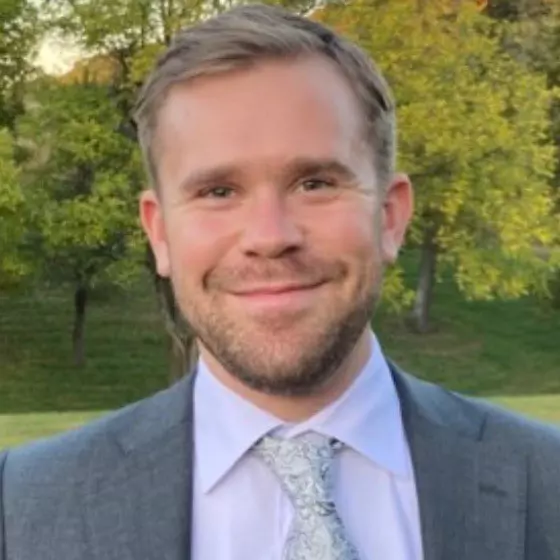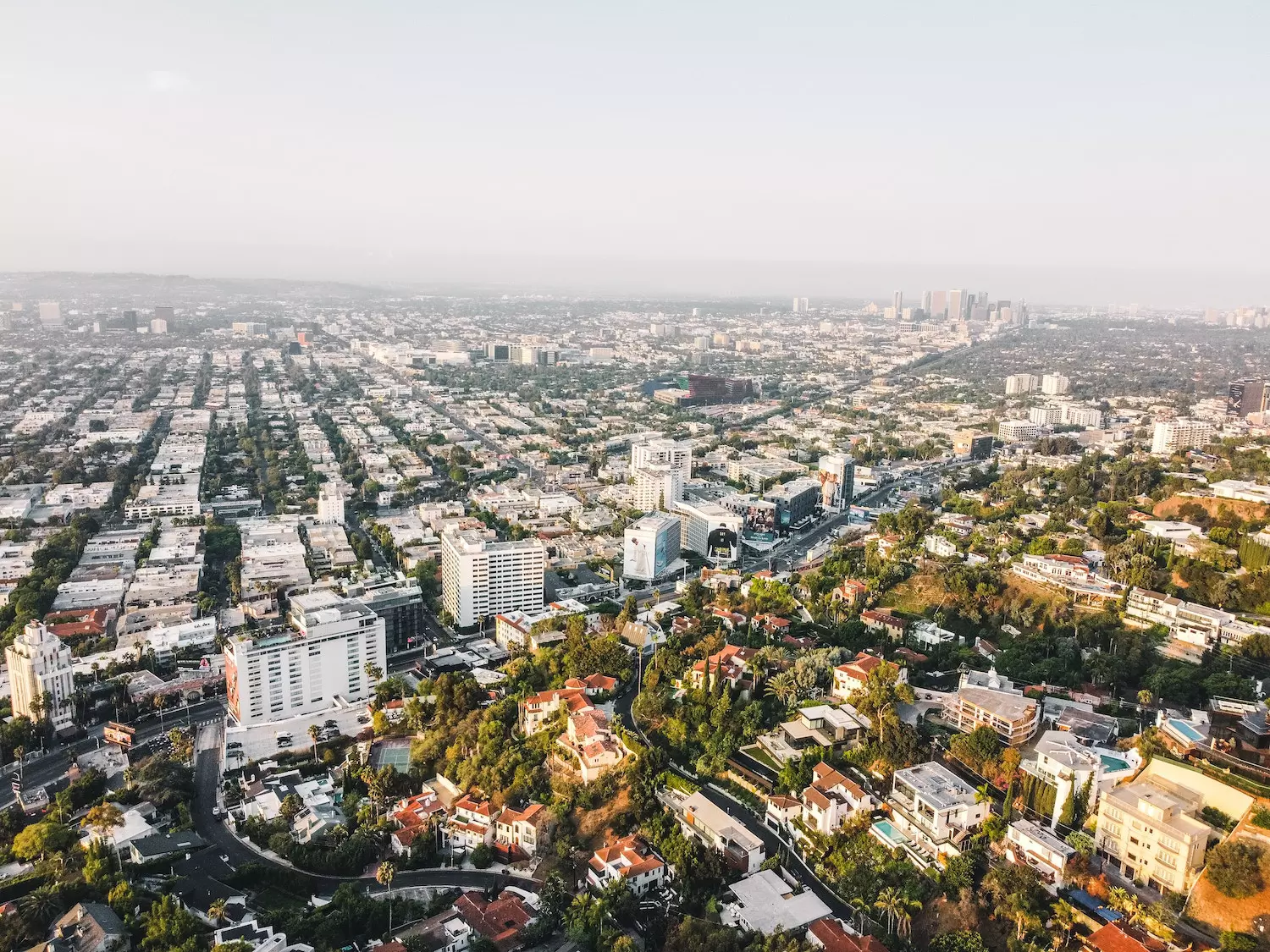We’re excited to collab with Clay Kerchof this month!
I (Kyle) first met Clay in 2014 in Yunnan, China in a teaching fellowship program right after college. We’ve stayed close ever since with our mutual interests in sustainability and the outdoors. Clay is an expert in climate policy and urban planning, and has a complex yet important topic to share with you all today.
Please note: The ideas shared in this collab only represent the views of the author and not necessarily those of the California Department of Housing & Community Development.
 Clay Kerchof
Clay Kerchof
August 2023 collab · 7 min listen
My name is Clay Kerchof, and I am an urban planner and policy specialist at the California Department of Housing & Community Development
I work at the intersection of affordable housing, disaster recovery, and climate adaptation.
I arrived at this professional niche while working as an affordable housing advocate in DC in my early twenties when Hurricanes Maria & Harvey and California wildfires laid bare how vulnerable our nation’s affordable housing supply is to climate risks.
This decarbon collab is intended to inform a climate-conscious audience about balancing climate and housing challenges facing communities. I am getting housing advocates talking about climate resilience and climate advocates talking about affordable housing.
While it is important for societies to take an “all of the above approach” to reducing carbon emissions as quickly as possible (e.g. decarbonizing the grid, electrifying transportation, reducing vehicle miles traveled, conserving natural/working lands, etc), we also have to adapt our built environments for climate change impacts that are already irreversible.

At its most basic, urban climate adaptation means hardening or relocating existing infrastructure and housing to reduce their vulnerability to climate hazards.
Just as climate change impacts are becoming more visible, damaging, and costly across the country, our nation’s decades-in-the-making affordable housing crisis is spilling out of high cost regions and affecting all parts of the country and people at nearly all income levels.
Housing is typically the greatest expense and largest source of wealth for most households. Increasingly unaffordable housing costs are exacerbating economic inequality and driving more people into homelessness.
High housing costs in major economic centers are driving people to live in less expensive areas that are more exposed to climate hazards like flooding, wildfire, and extreme heat.
While adapting existing development in high risk areas is a priority, areas within the existing development footprint generally have less exposure to hazard risks and are also more cost-effective to serve with resilience infrastructure and public services.
To achieve both climate mitigation and adaptation goals, future development must be transit-oriented infill development that:
- increases density and gets people closer to their daily needs;
- reduces VMT and carbon emissions;
- and protects natural/working lands and prevents additional development in high hazard risk areas.
Sustainable and resilient communities require affordable infill and transit-oriented development (TOD), in which higher land use densities can sustain high quality public transportation systems and urban configurations in which residents can live their lives without needing to drive for most things, is easiest when done right the first time.
However, the places we live in already exist, and federal, state, and local policies and investment are needed to reorient new development around multi-modal transportation systems that make walking, biking, and public transport as convenient as driving a private vehicle.
While affordable TOD strategies are aligned with GHG emissions and climate risk reduction goals, reorienting future housing production around infill TOD faces political, bureaucratic, and economic hurdles.

Local governments have authority over land use decisions and can use land use zoning to exclude density and affordable housing in certain neighborhoods, often exacerbating the legacy of residential redlining and perpetuating racial and economic segregation in housing and neighborhoods.
Low income communities and people of color have historically been locked out of and continue to disparately face barriers to wealth building opportunities and thus are more likely to live on cheaper land in neighborhoods that have experienced disinvestment and disproportionately face climate risks like flooding and extreme heat. Reversing decades of explicitly discriminatory public policy like redlining requires both allowing density in neighborhoods of opportunity near jobs and services, as well as hazard mitigation investments in vulnerable neighborhoods.
Meanwhile, NIMBYs (Not-in-my-backyard) have weaponized environmental law and community review processes to delay and block infill development.
In California, about two-thirds of CEQA (California Environmental Quality Act) litigation involves opposition to multifamily affordable housing projects. CEQA, signed into law by then Governor Ronald Regan in 1970, addresses environmental impact concerns from a time before climate change was a broadly understood existential concern, and its impact on planning and development in California cannot be overstated. Because CEQA considers localized environmental impacts rather than global climate impacts, the law (and the interpretation of it) places more scrutiny on higher density urban infill projects than exurban sprawl.
Local governments can then make the development of transit oriented and affordable housing difficult through discretionary, byzantine review processes that delay projects, add to development costs. All of these barriers conspire to make suburban tract home greenfield developments more profitable and easier to build, which in effect makes housing more expensive, forces people to drive more, and places communities in higher risk locations.
State legislatures, such as California’s, have passed legislation providing some carrots and sticks to local governments to permit more affordable infill development.
There are some successes from their efforts, but it will take time and continued advocacy and policy innovation to dig us out of the housing hole. In the past year, the Biden Administration has also launched pro-housing policies aimed at incentivizing local governments to plan for more infill housing. Similarly, such policies will require time and continued innovation to see measurable progress.
Liberalizing urban land use to allow more types of housing in more places, including larger multifamily buildings, duplexes/fourplexes and accessory dwelling units (ADUs), needs to be complemented by expansion of affordable housing subsidies by multiple factors.
Communities and regions are not resilient or sustainable if working and low-income people are unable to afford to live near their work, if people spend hours per day in their cars, and if communities are vulnerable to disaster.
Our housing and climate are deeply connected. Where we build housing affects the climate, and the climate affects the safety of our housing. We will be more successful in addressing our climate and housing goals, if we focus on strategies that achieve benefits for both issues.
What should you do?
- Climate mitigation: Walk, bike or take public transportation as much as you can.
- Housing equity: If you’re a homeowner, consider adding an ADU to your property.
- Climate adaptation: Know your hazard risk, understand your insurance coverage, and be fully insured!



